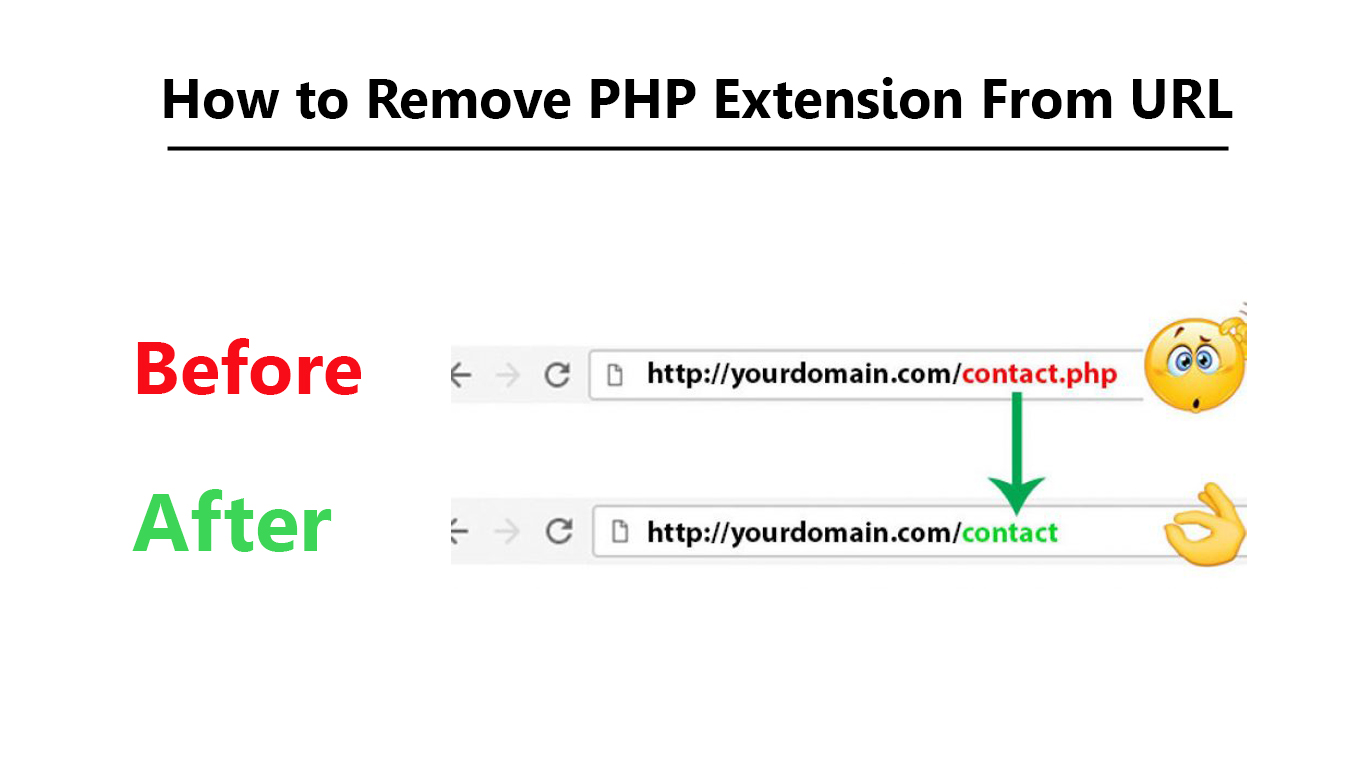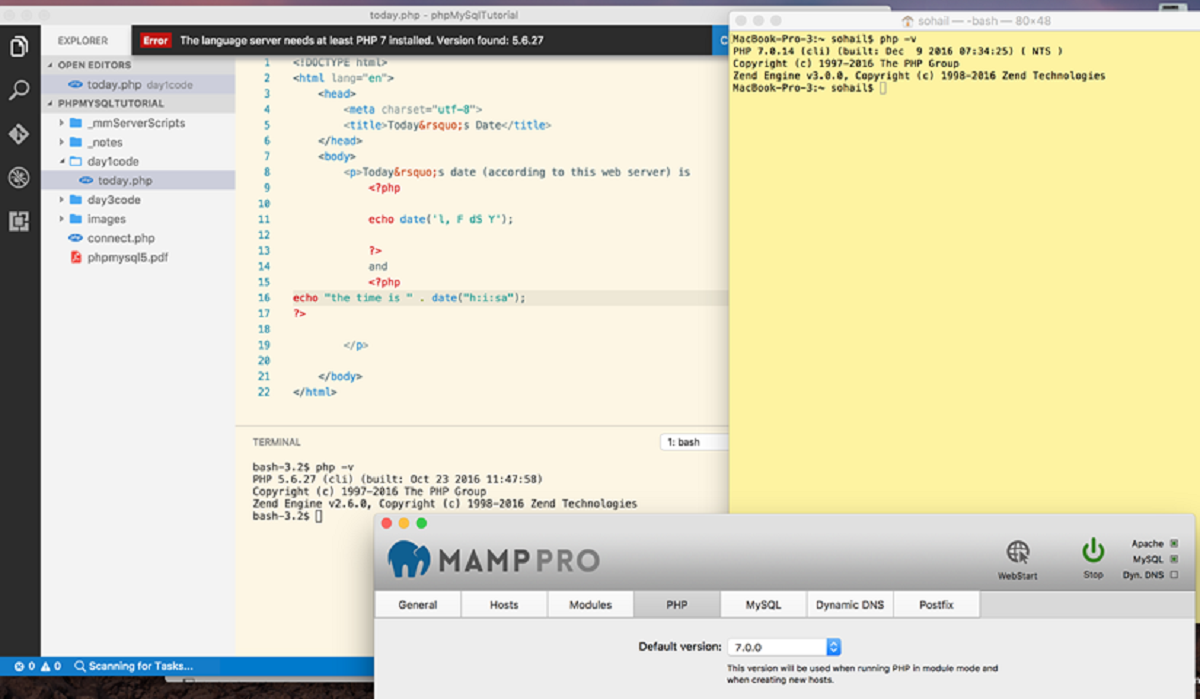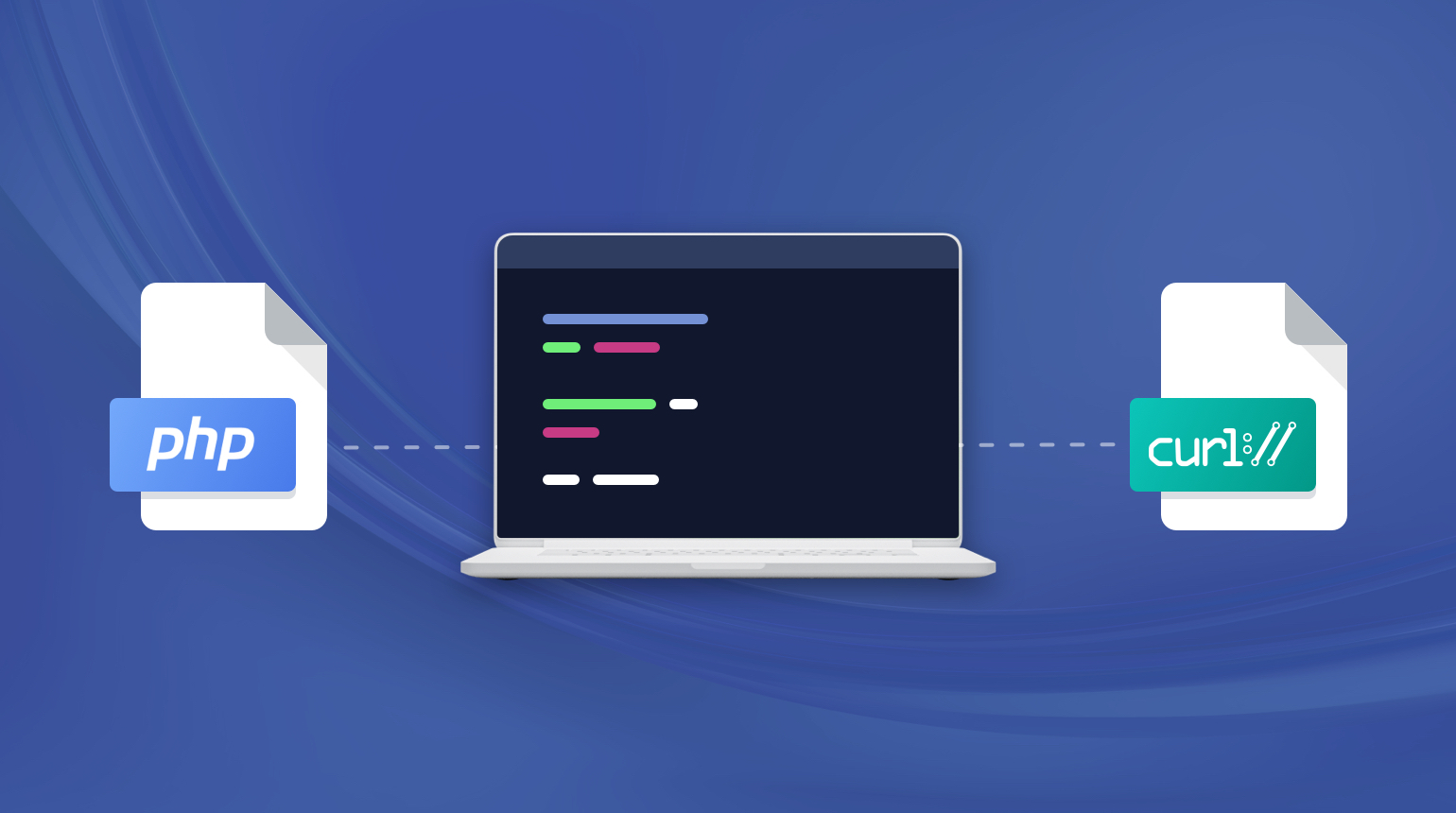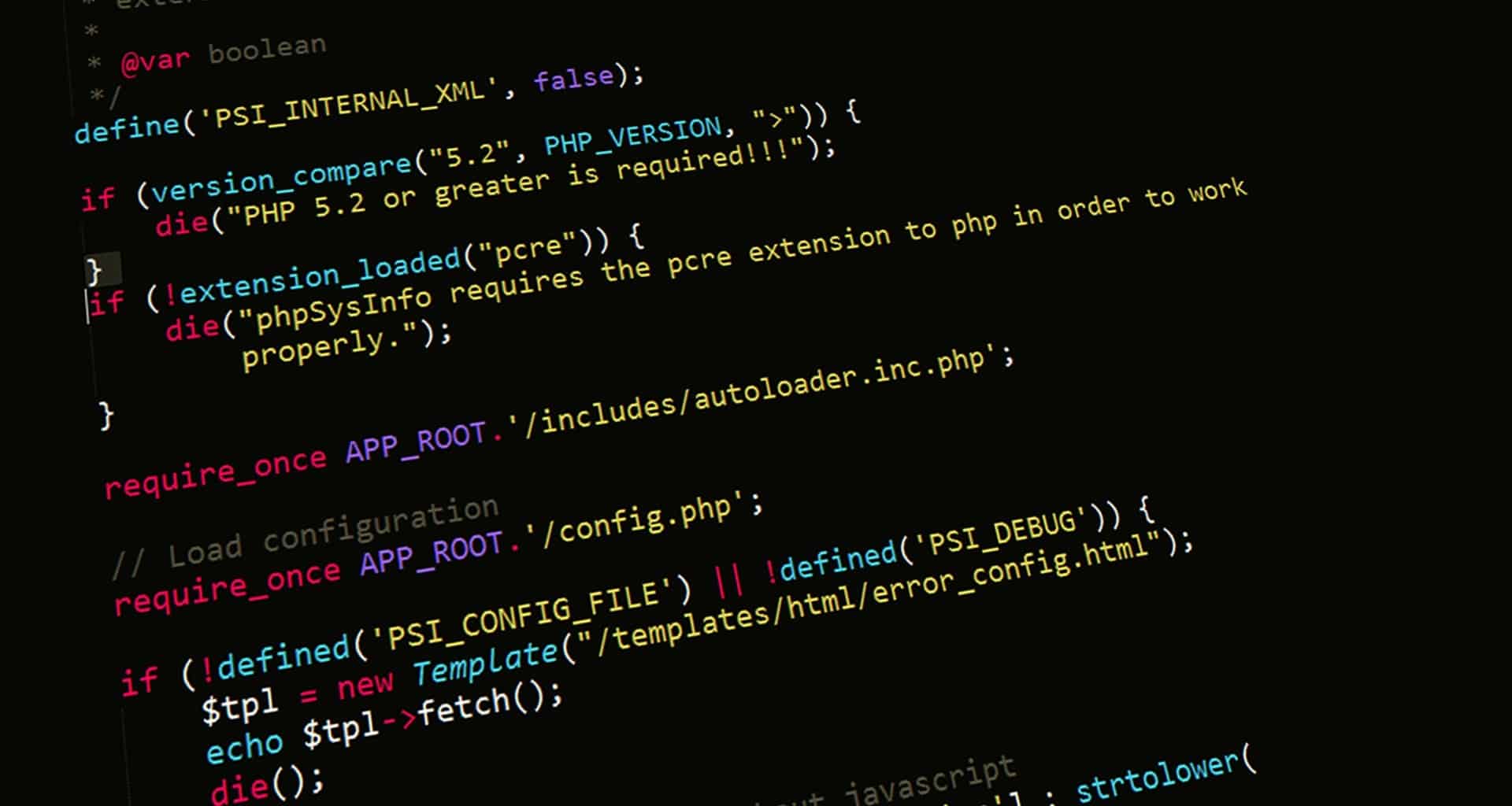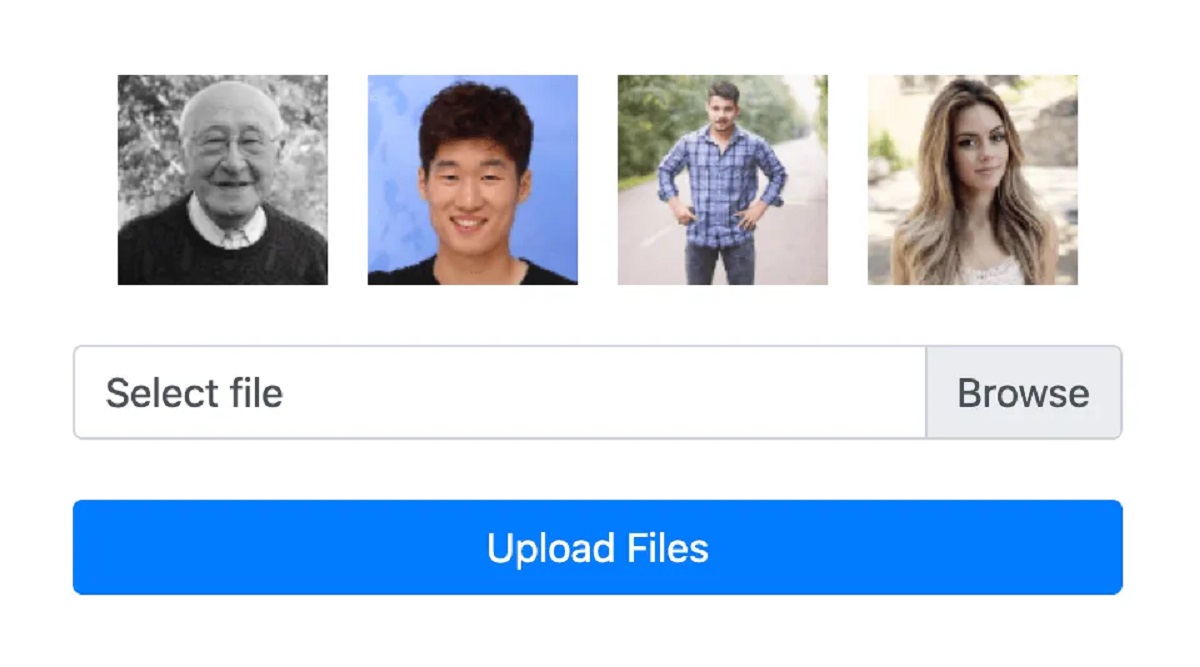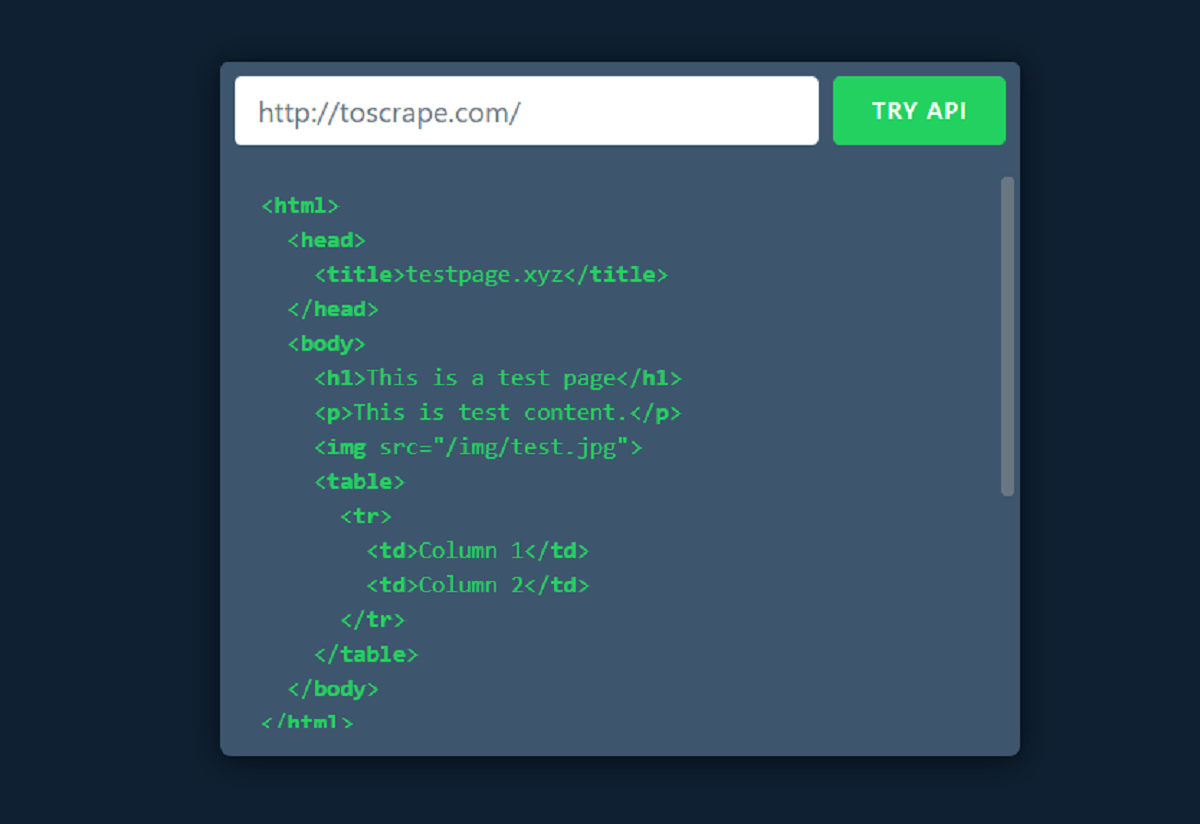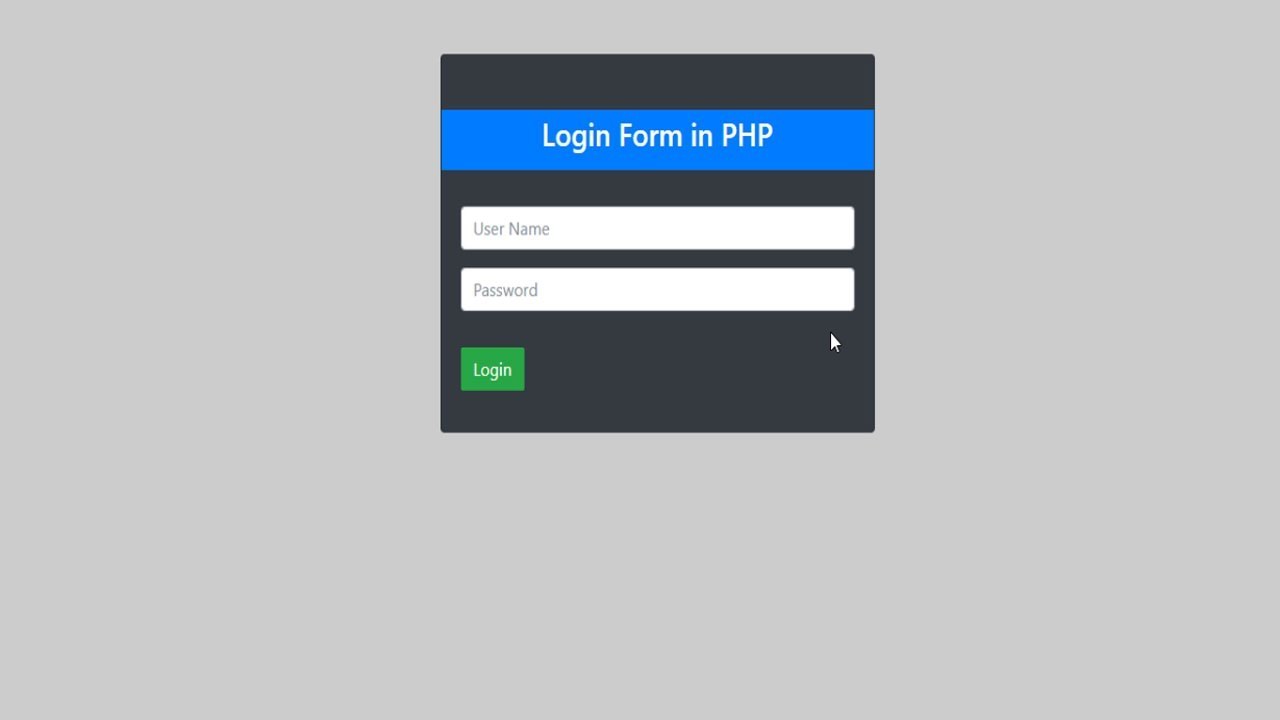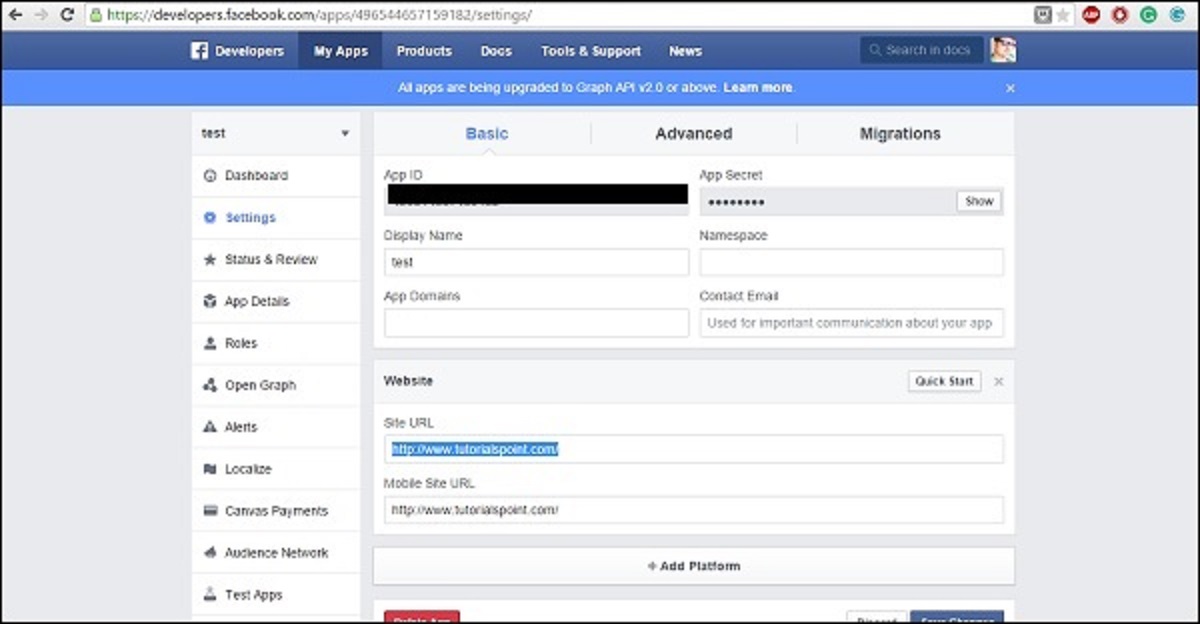Introduction
When browsing websites, you may have noticed that some URLs have a .php extension. For example, “www.example.com/page.php”. This extension is a common identifier for files written in the PHP programming language. While it is not inherently problematic, there are scenarios where you might want to remove the .php extension from your website’s URLs.
The purpose of this article is to explore the various reasons why you might want to remove the .php extension from your URLs and the different methods to achieve this. By removing the .php extension, you can create cleaner, more user-friendly URLs and potentially improve your website’s search engine optimization (SEO) performance.
Having user-friendly URLs is crucial for several reasons. Firstly, they are easier to read and remember for both users and search engines. A URL that is concise and descriptive allows users to understand the content of a page before clicking on it. Additionally, search engines often consider the keywords within a URL when determining the relevancy of a webpage. Therefore, having clean URLs can potentially improve your website’s visibility in search engine results.
Moreover, removing the .php extension can give your website a more professional and modern appearance. Many websites today have shifted towards using URLs with clean, extension-free structures that follow a logical hierarchy. This can enhance the usability, trustworthiness, and overall user experience of your website.
In the following sections, we will explore different methods you can use to remove the .php extension from your URLs. These methods range from configuring server settings to using content management systems or implementing URL rewriting techniques. Each method has its own advantages and considerations, so you can choose the one that best suits your website’s architecture and requirements.
What is a .PHP extension in URL?
In web development, a .php extension in a URL refers to a file written in the PHP programming language. PHP is a popular server-side scripting language used for creating dynamic web pages and web applications. When you visit a webpage that uses PHP, the server executes the PHP code and generates HTML content that is then sent to your web browser.
The .php extension serves as a way to identify PHP files to the server and distinguish them from other file types, such as HTML or CSS. It allows the server to know that the file contains PHP code that needs to be processed before delivering the final webpage to the user.
When a URL includes the .php extension, it typically indicates that the server is generating the content dynamically based on the requested page and any parameters provided. This dynamic content can include things like database queries, user input processing, and customized output based on specific conditions or user preferences.
For example, if you visit a website with the URL “www.example.com/page.php”, the server will execute the PHP code in the “page.php” file and generate the HTML content to display on your browser. This allows the webpage to provide interactive features, retrieve data from a database, or perform calculations in real-time.
While the .php extension is a standard way to identify PHP files, it is not necessary for the functionality of the website. From a user’s perspective, the .php extension doesn’t add much value or clarity to the URL. In fact, it can sometimes make URLs longer and less user-friendly, especially if they contain complex query strings or parameters.
That’s why some website owners prefer to remove the .php extension from their URLs, aiming for cleaner and more concise URLs that are easier to read and remember. Removing the .php extension is primarily a cosmetic change that doesn’t affect the functionality or performance of the website.
Why remove .PHP from URL?
There are several compelling reasons why you might want to remove the .php extension from your website’s URLs. Let’s explore some of the key benefits below:
1. User-Friendly URLs: Removing the .php extension from your URLs can make them more user-friendly and easier to read. Clean and concise URLs are not only visually appealing but also help users comprehend the content of a page at a glance. This can enhance the user experience and encourage visitors to engage with your website.
2. Improved Search Engine Optimization (SEO): Search engines often analyze the keywords within a URL to determine the relevance and ranking of a webpage. By removing the .php extension and using descriptive keywords in your URLs, you can potentially improve your website’s SEO performance. This can lead to higher visibility in search engine results, increased organic traffic, and better chances of attracting potential customers.
3. Enhanced Website Credibility: Having clean and extension-free URLs can contribute to the overall professionalism and credibility of your website. It gives the impression that your website is well-maintained and up-to-date with modern web standards. Users are more likely to trust and perceive your website as authoritative when the URLs reflect a polished and organized structure.
4. Better Click-Through Rates (CTR): When URLs are short, descriptive, and devoid of unnecessary elements like the .php extension, users are more likely to click on them. A visually appealing and concise URL can attract more attention, leading to higher click-through rates. This can be particularly beneficial for marketing campaigns and social media shares.
5. Easier Website Maintenance: Removing the .php extension can streamline website maintenance and management. If you decide to update or change the underlying technology of your website in the future, having extensionless URLs means you won’t have to update every URL across the site. This simplifies the migration process and reduces the chances of broken links.
6. Improved Accessibility: Clean URLs can also benefit users with disabilities or impairments who rely on screen readers or assistive technologies. These users often navigate websites by scanning URLs, and having clear and concise URLs can make their browsing experience more efficient and enjoyable.
By removing the .php extension from your URLs, you can create a more user-friendly, SEO-friendly, and visually appealing website. It is a relatively simple change that can have a significant impact on the overall performance and perception of your site.
Methods to remove .PHP from URL
There are several methods you can employ to remove the .php extension from your website’s URLs. The choice of method depends on factors such as your website’s hosting environment, server configuration, and your level of technical expertise. Let’s explore some of the most common methods below:
1. Method 1: Using .htaccess file: This method involves creating or modifying the .htaccess file on your web server. The .htaccess file is a configuration file that allows you to specify rules and directives for your website. By adding a rule to the .htaccess file, you can rewrite URLs to remove the .php extension. This method requires access to your web server and some knowledge of Apache configuration.
2. Method 2: Using Apache configuration: If you have access to the Apache server configuration, you can modify it to remove the .php extension from URLs. This method involves editing the Apache configuration file (httpd.conf) and adding a rule to handle URL rewriting. It provides more control over the URL structure but requires familiarity with Apache server configuration.
3. Method 3: Using a content management system (CMS): Many popular content management systems like WordPress, Joomla, and Drupal have built-in settings or plugins that allow you to remove the .php extension from URLs. These settings usually provide a user-friendly interface where you can enable URL rewriting and configure the desired URL structure. This method is suitable for users who prefer a simpler and more automated approach.
4. Method 4: URL rewriting: URL rewriting is a technique that allows you to change the URL structure without affecting the underlying file or resource. It involves creating rewrite rules in the web server’s configuration, .htaccess file, or within the website’s code itself. These rules map the clean URL to the corresponding PHP file behind the scenes. URL rewriting provides flexibility and customization options, but it requires a good understanding of regular expressions and server configuration.
It’s important to note that the availability and feasibility of these methods may vary depending on your hosting environment and server setup. If you are unsure about which method to choose or how to implement it, it may be wise to consult with a web developer or your hosting provider for guidance.
By using one of these methods, you can remove the .php extension from your URLs, create cleaner and more user-friendly URLs, and potentially enhance your website’s SEO performance and overall user experience. Evaluate the pros and cons of each method and choose the one that best suits your specific requirements and technical capabilities.
Method 1: Using .htaccess file
One popular method to remove the .php extension from your website’s URLs is by utilizing the .htaccess file. The .htaccess file is a configuration file that is placed in the root directory of your website and allows you to modify server settings on an Apache web server. Here’s how you can use the .htaccess file to achieve clean and extensionless URLs:
1. Access the .htaccess file: Connect to your website’s server using an FTP client or the file manager provided by your hosting provider. Locate the root directory of your website, usually named public_html or www, and look for the .htaccess file. If the file doesn’t exist, you can create a new one using a text editor.
2. Edit the .htaccess file: Open the .htaccess file in a text editor and add the following code:
apache
RewriteEngine On
RewriteCond %{REQUEST_FILENAME} !-d
RewriteCond %{REQUEST_FILENAME}.php -f
RewriteRule ^([^\.]+)/?$ $1.php [L]
3. Save and upload the .htaccess file: Save the changes to the .htaccess file and upload it back to the root directory of your website. Make sure to overwrite the existing .htaccess file if you had one.
4. Test the clean URLs: Visit your website and test a URL by accessing a page that previously had the .php extension. For example, if you had a page called “example.php,” you can now access it using the clean URL “example”. The .htaccess file will internally rewrite the request to the corresponding PHP file without the extension.
Note: Ensure that the Apache web server on your hosting environment has the rewrite module enabled for the .htaccess directives to work correctly. You can usually enable this module through your hosting provider’s control panel or by contacting their support.
Using the .htaccess file provides a convenient and server-side solution to remove the .php extension from your URLs. It allows you to create a clean and user-friendly URL structure without modifying the actual PHP files or affecting the website’s functionality. The .htaccess method is widely supported and works well on most Apache web servers. However, keep in mind that any changes made to the .htaccess file can affect the entire website, so be cautious and back up the file before making any modifications.
If you encounter any issues or difficulties while implementing this method, it’s advisable to seek assistance from a web developer or your hosting provider’s support team for guidance.
Method 2: Using Apache configuration
If you have access to the Apache server configuration, you can remove the .php extension from URLs at a server level. This method provides more control and flexibility over the URL structure. Here’s how you can use the Apache configuration to achieve extensionless URLs:
1. Access the Apache configuration: Connect to your web server using SSH or a suitable method to access the Apache server configuration. The configuration file is typically named “httpd.conf” and is located in the Apache installation directory.
2. Edit the Apache configuration: Open the “httpd.conf” file in a text editor and locate the “Directory” directive that corresponds to your website’s directory. Inside the “Directory” block, add the following code:
apache
RewriteEngine On
RewriteCond %{REQUEST_FILENAME} !-d
RewriteCond %{REQUEST_FILENAME}.php -f
RewriteRule ^(.*)$ $1.php [L]
3. Save and restart Apache: Save the changes to the Apache configuration file and restart the Apache server for the new configuration to take effect. The method to restart Apache varies depending on your operating system and server configuration. Common commands include “service apache2 restart,” “apachectl restart,” or “systemctl restart httpd.”
4. Test the clean URLs: Visit your website and test a URL by accessing a page that previously had the .php extension. The Apache server will internally rewrite the request to the corresponding PHP file without the extension. For instance, if you had a page called “example.php,” you can now access it using the clean URL “example”.
Using the Apache configuration method grants you more control over the URL structure by handling the rewriting process at the server level. It ensures that clean URLs are applied consistently across your website without relying on individual .htaccess files. However, it requires access to the Apache server configuration and the necessary permissions to make changes.
It’s important to note that modifying the Apache configuration is a critical task that can impact the functioning of your entire website. Therefore, exercise caution and create a backup of the configuration file before making any modifications. If you’re unsure about the process or lack the necessary expertise, consult a professional web developer or your hosting provider for assistance.
Implementing this method can provide you with clean and extensionless URLs, enhancing the user-friendliness, and potentially improving the search engine optimization (SEO) of your website.
Method 3: Using a content management system (CMS)
If your website is built on a content management system (CMS) such as WordPress, Joomla, or Drupal, removing the .php extension from your URLs can often be accomplished through built-in settings or plugins. Here’s how you can use a CMS to achieve extensionless URLs:
1. Access CMS settings: Log in to your CMS administration panel and navigate to the settings or configuration section. The exact location may vary depending on the CMS you are using.
2. Enable clean URLs: Look for the option to enable clean or friendly URLs. This setting may be referred to as “permalinks,” “URL structure,” or something similar. Enable this setting to remove the .php extension from your URLs and specify the desired URL structure. The CMS will handle URL rewriting internally.
3. Save changes: Save the changes to the CMS settings to apply the new URL structure. The CMS will generate clean URLs automatically for your website’s pages and ensure that requests for the extensionless URLs are properly handled.
4. Test the clean URLs: Visit your website and navigate to a page that previously had the .php extension in its URL. Verify that the URLs now appear clean and extension-free when accessing different pages. For example, if you had a page called “example.php,” you should now be able to access it using a URL like “example”.
CMS platforms often have user-friendly interfaces and built-in functionality for managing URLs, making the process of removing the .php extension straightforward. However, the availability and location of the settings may vary depending on the CMS and the version you are using.
If you cannot find the necessary settings in your CMS or encounter any difficulties during the process, consider using SEO or URL-rewriting plugins available for your CMS. These plugins can provide additional control and customization options for managing your URLs and removing the .php extension.
Remember to test the functionality and compatibility of your website after making any changes to the CMS settings or installing new plugins. It’s also a good practice to create a backup of your website before making any modifications to ensure you can revert to a previous state if needed.
By utilizing the built-in settings or plugins in your CMS, you can easily remove the .php extension from your URLs and create clean, user-friendly URLs for your website. This can enhance the user experience, improve the search engine optimization (SEO) of your site, and contribute to a more professional appearance.
Method 4: URL rewriting
URL rewriting is a flexible and powerful method to remove the .php extension from your website’s URLs. It involves creating rewrite rules that map clean, extensionless URLs to the corresponding PHP files behind the scenes. URL rewriting can be implemented using various techniques and tools, such as Apache’s mod_rewrite module or a dedicated URL rewriting library. Here’s how you can use URL rewriting to achieve extensionless URLs:
1. Access your server: Connect to your website’s server using an FTP client or SSH.
2. Locate the rewrite rules file: Look for the file where you need to specify the rewrite rules. This could be an .htaccess file (if available), the server configuration file, or a specific configuration file used for URL rewriting (e.g., a “rewrite.conf” file).
3. Write the rewrite rule: Depending on the method you choose, the syntax for the rewrite rule may differ. Here’s an example using Apache’s mod_rewrite module in an .htaccess file:
apache
RewriteEngine On
RewriteCond %{REQUEST_FILENAME} !-d
RewriteCond %{REQUEST_FILENAME} !-f
RewriteRule ^([^\.]+)/?$ $1.php [L]
This rule checks if the requested URL is not a directory or an existing file. If it matches this condition, it internally redirects the request to the corresponding PHP file without the .php extension.
4. Save and upload the rewrite rules: Save the changes to the rewrite rules file and upload it to your website’s server, replacing any existing file if necessary.
5. Test the extensionless URLs: Visit your website and access a page that previously used the .php extension. Verify that the URL is now clean and extension-free, while still properly loading the intended PHP content.
URL rewriting provides you with granular control over the structure and appearance of your URLs. It enables you to create clean, user-friendly URLs while maintaining the functionality of your PHP files. However, implementing URL rewriting requires a good understanding of regular expressions and server configuration.
When working with URL rewriting, it’s important to test your rules thoroughly and anticipate potential conflicts with existing URLs or rules. Take caution not to create redirect loops or inadvertently block access to essential files or directories. Regularly monitor your website after implementing URL rewriting to ensure that all pages are accessible and functioning as intended.
If you’re unsure about the technical aspects of URL rewriting or need assistance, consider consulting a professional web developer or seeking support from your hosting provider.
By utilizing URL rewriting, you can remove the .php extension from your URLs, improve user experience, enhance SEO, and create clean and professional-looking URLs for your website.
Conclusion
Removing the .php extension from your website’s URLs can bring numerous benefits, including improved user experience, enhanced search engine optimization (SEO), and a more professional appearance. While the .php extension itself is not inherently problematic, eliminating it can create cleaner, more user-friendly URLs that are easier to read and remember.
Throughout this article, we explored four different methods to remove the .php extension from URLs:
- Using the .htaccess file: This method involves adding rewrite rules to the .htaccess file, which allows you to redirect extensionless URLs to their corresponding PHP files internally.
- Using Apache configuration: If you have access to the Apache server configuration, you can modify it to handle URL rewriting. This method provides more control over the URL structure but requires knowledge of Apache server configuration.
- Using a content management system (CMS): Many popular CMS platforms have built-in settings or plugins that simplify the process of removing the .php extension from URLs. These settings allow you to configure clean URL structures without much technical knowledge.
- Implementing URL rewriting: URL rewriting through techniques like Apache’s mod_rewrite module or custom rewrite rules provides flexibility and customization options. It requires a good understanding of regular expressions and server configuration.
Each method has its own advantages and considerations. The choice of method depends on factors such as your technical expertise, website architecture, and hosting environment. It is important to carefully evaluate the pros and cons of each method before implementing the one that best fits your requirements.
By removing the .php extension from your URLs, you can create clean, user-friendly URLs that are easier to navigate and understand. This can lead to improved user engagement, better SEO performance, and enhanced credibility for your website. As a result, it can contribute to a positive user experience and help you achieve your website’s goals.
Remember to regularly monitor and test your website after implementing any changes to ensure proper functionality. If you encounter any difficulties or need guidance, it is advisable to consult with a web developer or reach out to your hosting provider for assistance.
With the information and methods provided in this article, you are now equipped to remove the .php extension from your URLs and optimize your website for a more seamless and user-friendly browsing experience.







